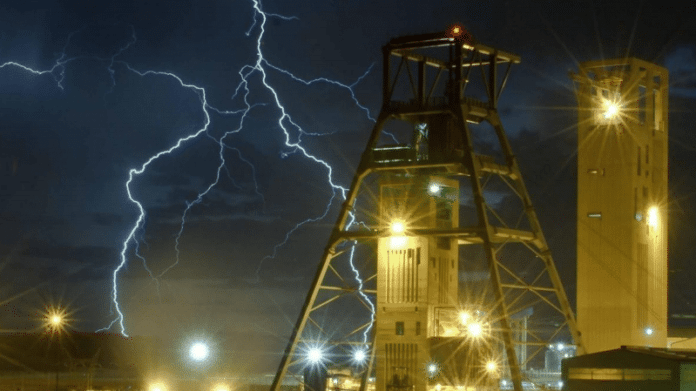
CHRIS Griffith, CEO of Gold Fields, ended speculation he could look differently on the firm’s South African mine South Deep saying the 280,000 ounce a year operation was “a franchise asset” that had a place in the group “for many years to come”.
South Deep has a chequered history. Bought for R22bn from Barrick Gold in 2006, the mine has continually failed to produce cash for Gold Fields and only turned cash positive in the last two years following a restructuring.
The appointment of Griffith, who started at Gold Fields in April, led to speculation he might decide to cut the firm’s ties with the West Rand mine. But Griffith said today in an interim results media call that South Deep had “… turned the corner” in recent years.
“There is a plan to keep it [South Deep],” he said during a media conference call. “The trajectory we’ve seen and with its potential we believe this is a franchise asset for Gold Fields.” Griffith said Gold Fields wouldn’t seek to expand South Deep unless it was proven to produce cash.
He endorsed former CEO Nick Holland’s earlier guidance that South Deep would produce 20% to 30% more gold over this year’s adjusted guidance of 8.7 tons (280,000 oz).
Acquisitions
Commenting on plans to maintain production at Gold Fields’ current guided peak, Griffith said options being considered were the takeover of in-production or near-production mines, possibly involving the takeover of junior gold mining firms, and organic growth.
“We are actively looking around Cerro Corona in Peru but we’re also looking at new jurisdictions: in production assets or early stage production,” said Griffith. “We don’t want to get too specific,” he said, adding Gold Fields had “plenty to time” to assess its options.
He also numbered Gold Fields Gruyere mine in Australia as well as the Damang and the Asanko joint venture in Ghana as potential growth assets.
Meanwhile, Gold Fields’ $860m Salares Norte project in Chile was expected to produce about 450,000 oz a year in production over its first seven years when it was commissioned, expected to be in early 2023.
Dividends
As guided in a July 30 update, Gold Fields produced strong first half numbers reporting a normalised profit of $430.5m, a 33% year on year improvement largely informed by a 10% increase in the gold price received.
Gold Fields runs an active gold hedging book from which it booked a $274m loss in the six months ended June 2020. In the period under review, the losses on financial instruments as a whole reduced 81% to $53m of which $14m were realised losses.
An operational negative was an 11% increase in all-in sustaining costs (AISC) to $1,093 per oz which Gold Fields said was a result of the improvement in host country currencies against the US dollar. In the case of the South African rand, there was a 12% appreciation against the dollar during the six month period.
Production for the first half of this year came in at 1.1 million oz, about 4% higher year on year. Guidance of 2.3 million to 2.35 million oz has been maintained which will be produced at an AISC is expected to be between $1,020/oz and $1,060/oz.
Net debt was at $1.097bn as of June 30 compared to $1.24bn at the close of the interim period in the previous financial year.
The bottom line for shareholders was an interim dividend announcement of 210 South African cents per share compared to 160 cents/share in the previous interim period. The payout was in terms of the firm’s policy of distributing 25% to 35% of normalised dividends.











